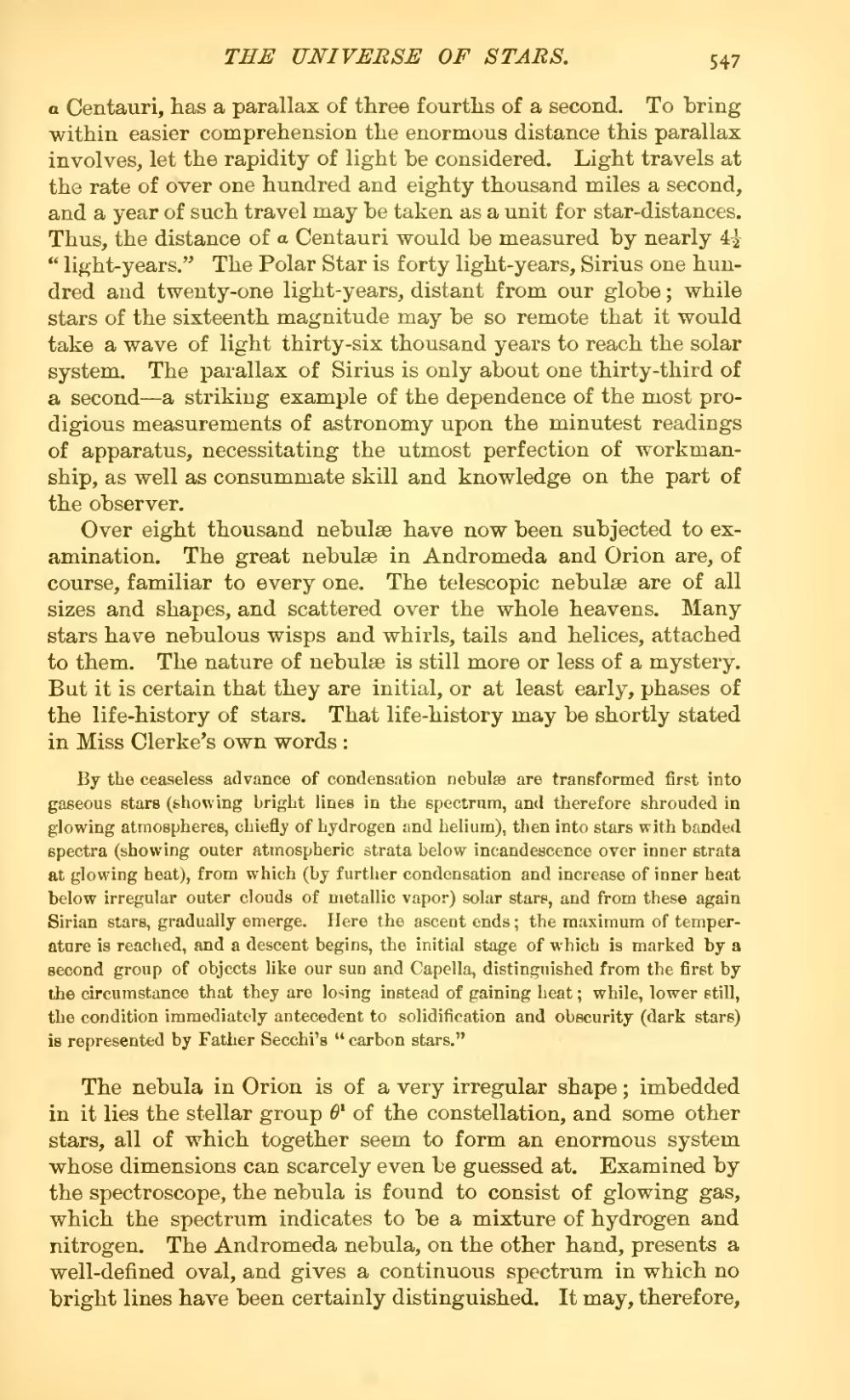α Centauri, has a parallax of three fourths of a second. To bring within easier comprehension the enormous distance this parallax involves, let the rapidity of light be considered. Light travels at the rate of over one hundred and eighty thousand miles a second, and a year of such travel may be taken as a unit for star-distances. Thus, the distance of a Centauri would be measured by nearly 412 "light-years." The Polar Star is forty light-years, Sirius one hundred and twenty-one light-years, distant from our globe; while stars of the sixteenth magnitude may be so remote that it would take a wave of light thirty-six thousand years to reach the solar system. The parallax of Sirius is only about one thirty-third of a second—a striking example of the dependence of the most prodigious measurements of astronomy upon the minutest readings of apparatus, necessitating the utmost perfection of workmanship, as well as consummate skill and knowledge on the part of the observer.
Over eight thousand nebulæ have now been subjected to examination. The great nebulæ in Andromeda and Orion are, of course, familiar to every one. The telescopic nebulæ are of all sizes and shapes, and scattered over the whole heavens. Many stars have nebulous wisps and whirls, tails and helices, attached to them. The nature of nebulæ is still more or less of a mystery. But it is certain that they are initial, or at least early, phases of the life-history of stars. That life-history may be shortly stated in Miss Clerke's own words:
The nebula in Orion is of a very irregular shape; imbedded in it lies the stellar group θ1 of the constellation, and some other stars, all of which together seem to form an enormous system whose dimensions can scarcely even be guessed at. Examined by the spectroscope, the nebula is found to consist of glowing gas, which the spectrum indicates to be a mixture of hydrogen and nitrogen. The Andromeda nebula, on the other hand, presents a well-defined oval, and gives a continuous spectrum in which no bright lines have been certainly distinguished. It may, therefore,
